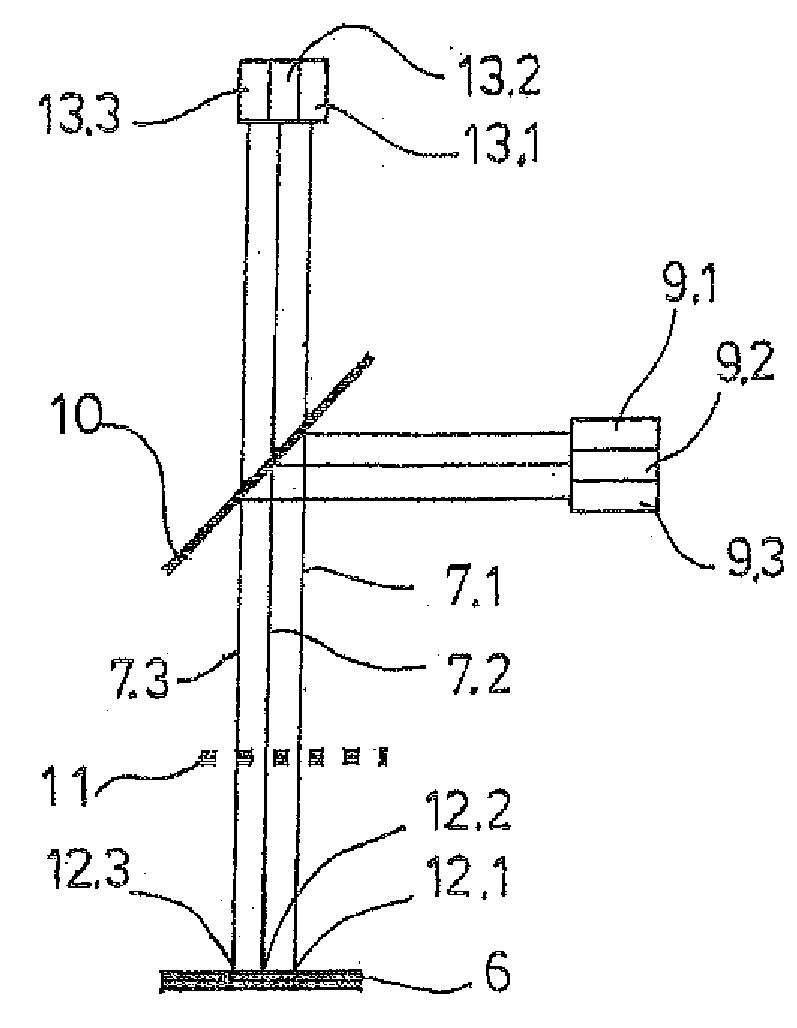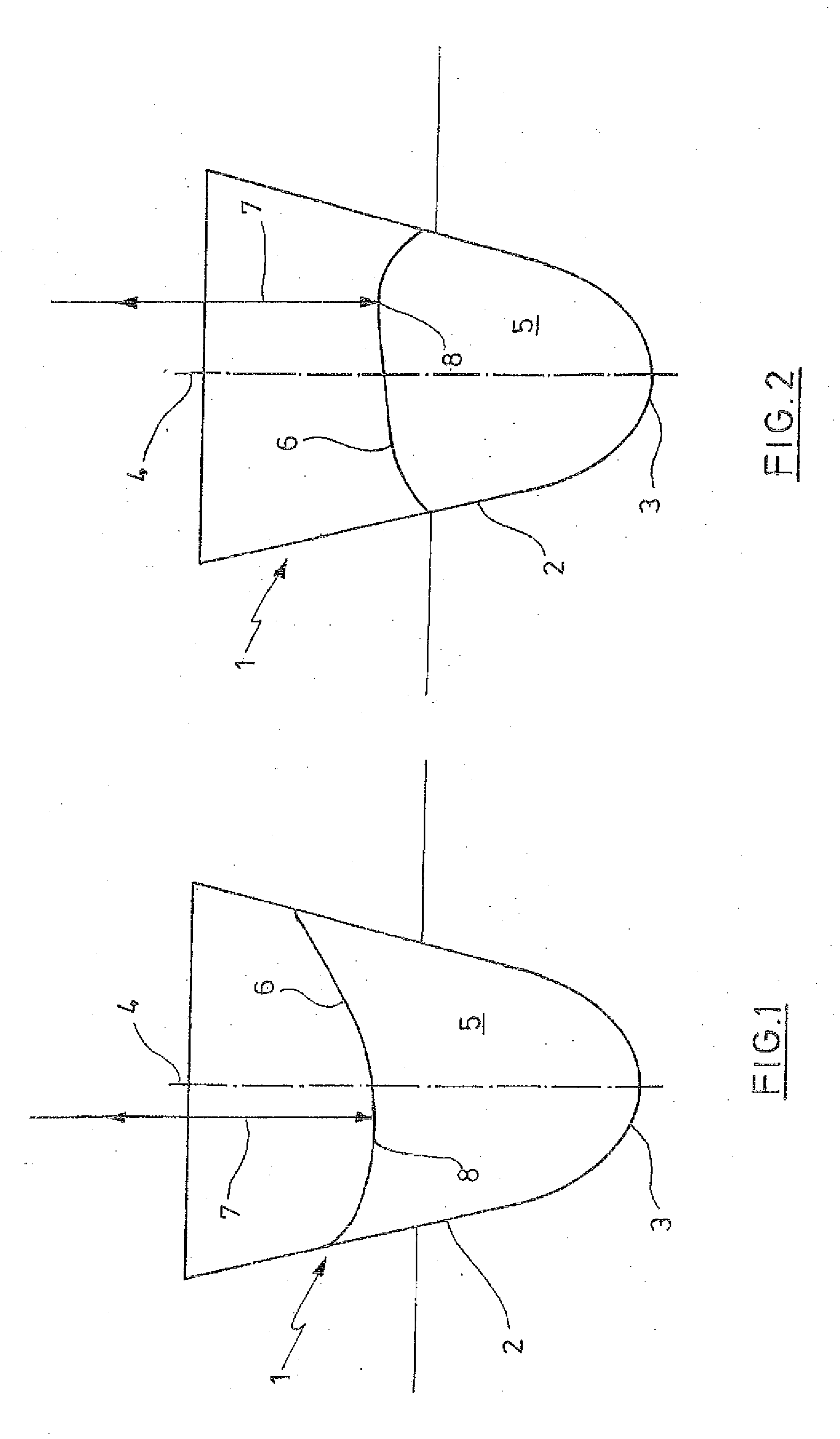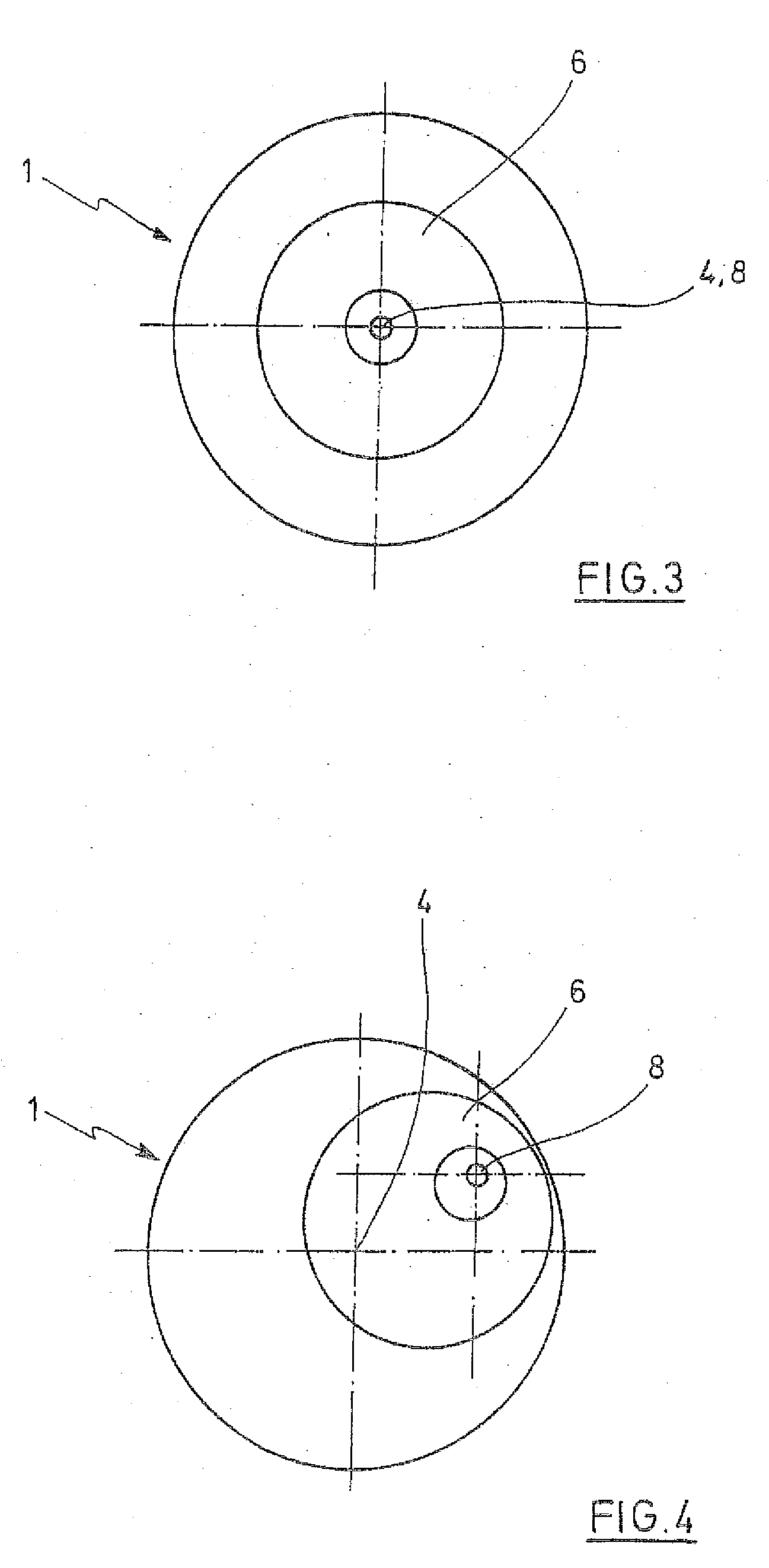[0020]The mentioned advantageous effects are achieved in particular when the device for projecting projects the light simultaneously to plural illumination positions and / or when it projects the light to the same illumination position under different angles simultaneously and only one single photo
detector is at hand. Further, they are achieved when the device for projecting illuminates only one illumination position under only one angle and plural photo detectors are at hand. They are achieved in a particularly advantageous way when the device for projecting illuminates plural illumination positions at the same time and / or when it illuminates the same illumination position simultaneously under different angles and plural photo detectors are at hand.
[0021]The optical sensor
system can detect different kinds of interfaces, liquids and objects in particular, with diffusely or directedly reflecting interfaces in particular. Thus, it may be used in particular to determine the position and / or identity of interfaces or of the liquids or objects featuring the same, respectively. In principle, the device for projecting can project the light of an extraneous
light source. According to one embodiment, the device for projecting has at least one
light source. According to a further embodiment, the
light source is at least one
laser, LED or light
bulb. For instance, the
laser is a
semiconductor laser, a
laser diode in particular.
[0022]When the device for projecting has plural light sources, the light of different light sources can be projected to different illumination positions absolutely at the same time, and / or it can be projected simultaneously to the same illumination position under different angles. However, the present invention incorporates also realisations in which the light of different light sources is projected offset in time to plural illumination positions and / or is projected offset in time to the same illumination position under different angles, so that only one light source is switched on at a certain point in time. These realisations also permit a more
rapid detection of the interface, in particular when the light sources are switched on in a very rapid sequence, because by doing so the interface can be scanned much more rapidly than by displacing the known one-beam sensor
system by means of the adjustment device. The consecutive switching-on of plural light sources can aid in assigning the measurement signals to the different light sources. Thus, plural light sources switched on one after the other illuminate the different illumination positions quasi simultaneously or illuminate one illumination position quasi simultaneously under different angles, and therefore they are switched on simultaneously in the spirit of the invention.
[0023]According to one embodiment, the light source emits light having a
wavelength which is reflected in a particularly high degree by an interface to be detected. Accordingly, light with a
wavelength other than that used for the detection of the interface of an object can be used for the detection of the interface of a liquid. When it is worked with light of a
wavelength for which the liquid is un-transparent, the liquid level can be acquired free of disturbances through vessel walls nearby. When the liquid is transparent for light of a certain wavelength, the location of the vessel bottom can be detected across the liquid with this light. The suitable wavelength for the detection of a liquid can depend on the composition thereof (aqueous or organic solutions, for instance). The suitable wavelength for the detection of the surface of an object can depend on from which material (
metal or plastics, e.g.), with which properties (transparent, reflecting, glossy, matte and so on) the same is made. Wavelengths in a broad range come into consideration, which includes visible and invisible light (IR- and UV-
radiation).
Laser diodes are at hand for the range of visible light in particular.
[0024]According to one embodiment, the device for projecting has plural separately switchable light sources with different wavelengths, which can be switched on depending on the interface to be detected. According to another embodiment, the device for projecting has one light source with adjustable wavelength (a tuneable
laser diode for instance).
[0025]These embodiments permit to detect an interface with light of different wavelengths. Invalid measurement values can be recognised and discarded after check-up of the measurement with light of another wavelength. In particular, when only a very small amount of liquid is contained in a vessel, it is important to discriminate between the surface of the liquid and the bottom of the vessel. When measuring with light of only one wavelength, this may be very difficult. The use of light with different wavelengths facilitates the assignment, in particular when the wavelength is optimised according to measurement case and material.
 Login to View More
Login to View More  Login to View More
Login to View More 


